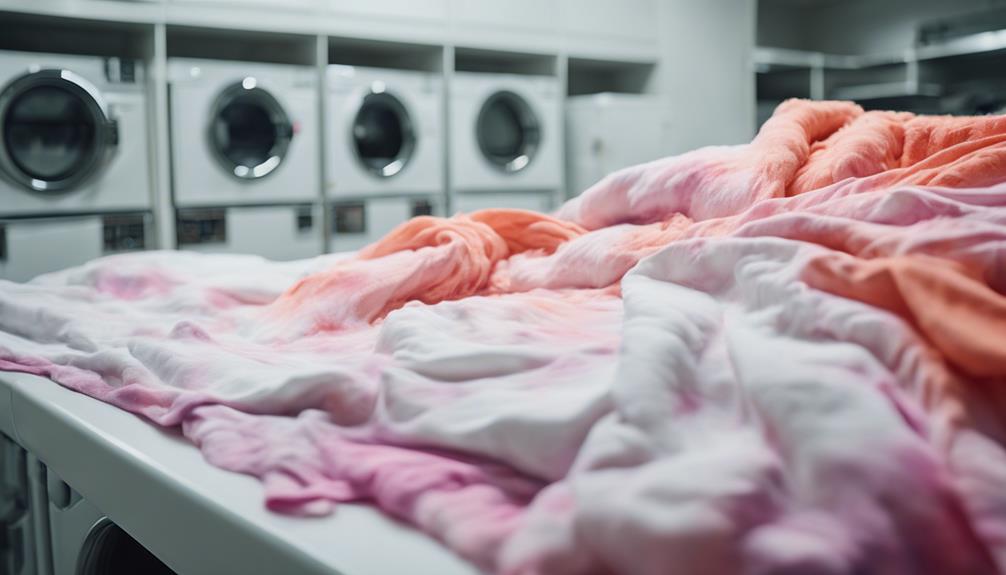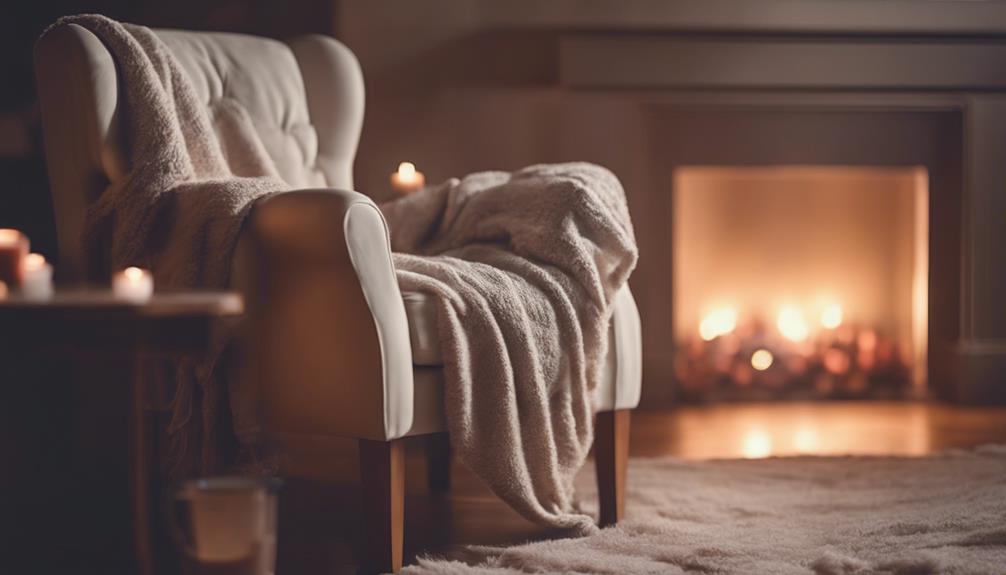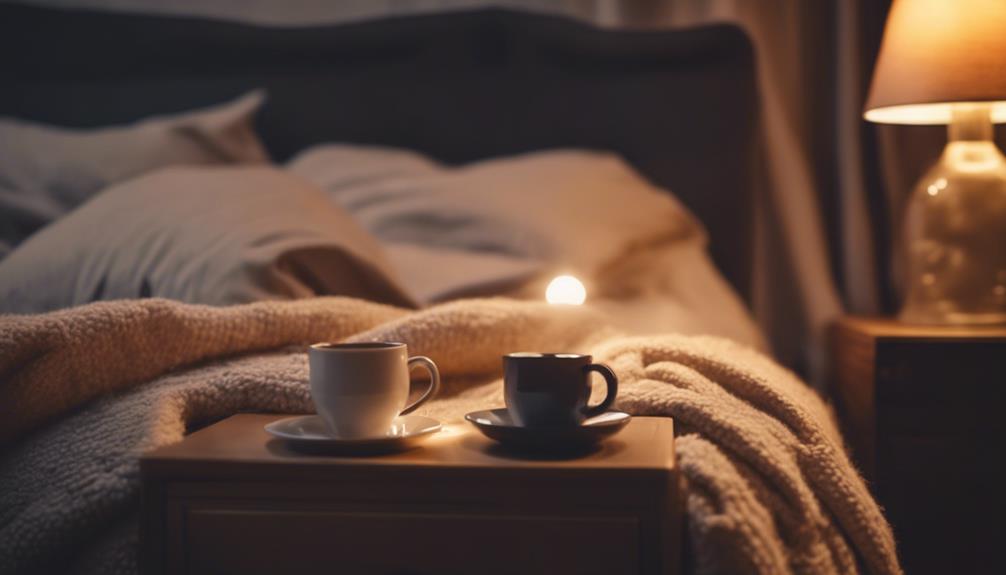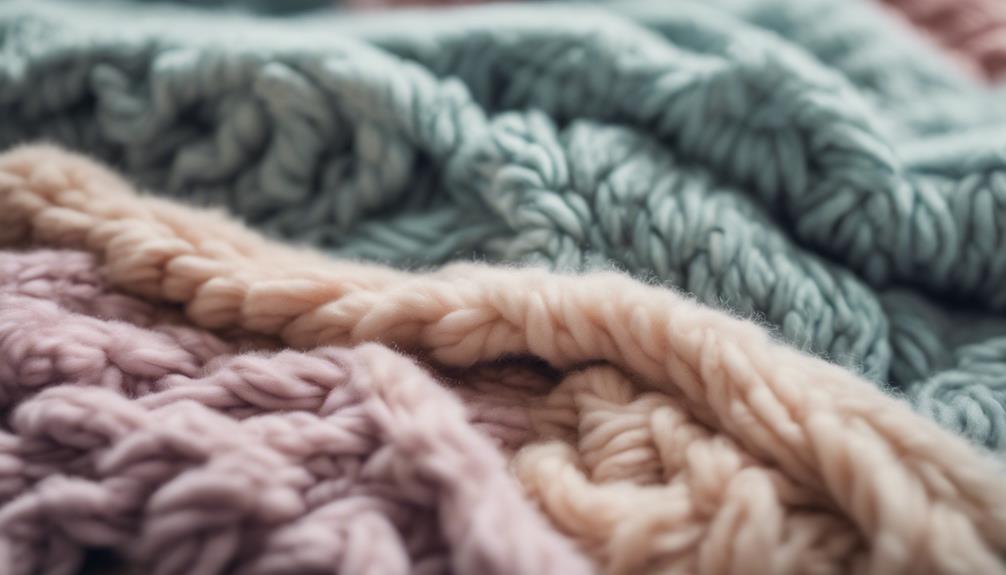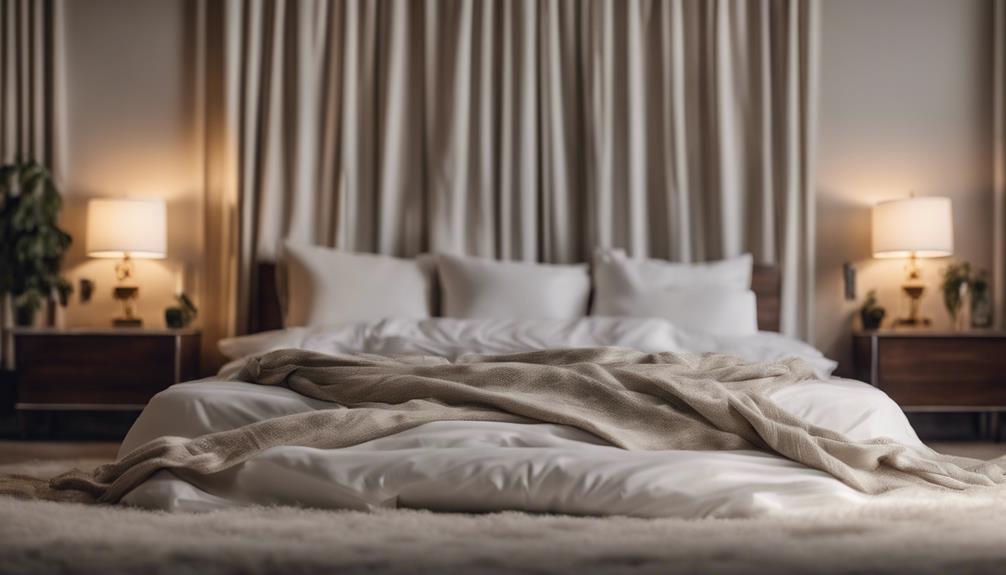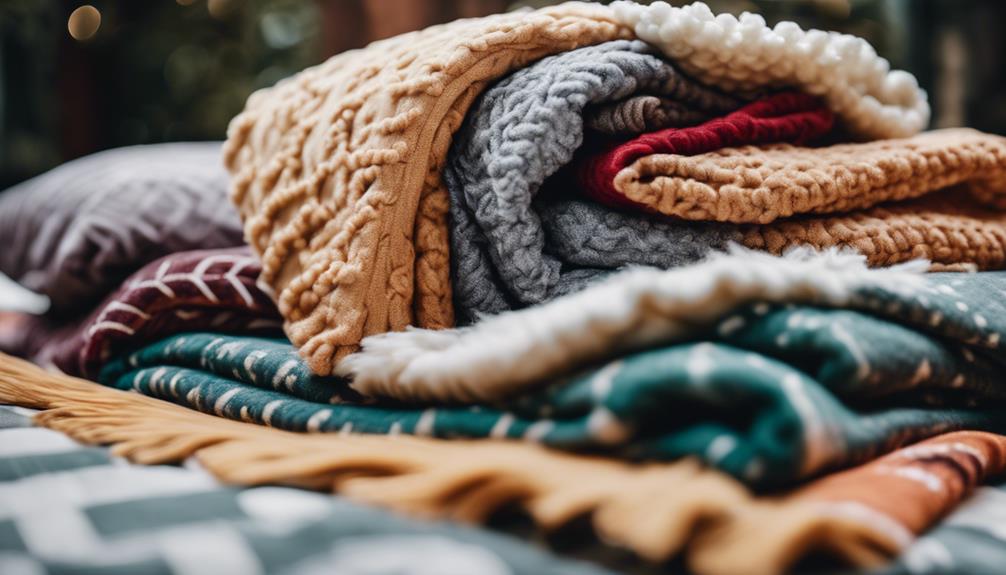Dyeing a comforter with Rit dye is a great way to update bedding affordably. Start by thoroughly washing the comforter and possibly splitting it for an more even dye. Use hot water and follow the dye instructions for the material. Optimal results typically require six bottles of Rit Liquid Dye. You can choose from a variety of colors such as Denim Blue or Olive Green. Properly mix the dye with water and completely submerge the comforter for best results. Make sure to rinse thoroughly in cold water. To ensure a successful dyeing project, carefully follow all steps. For more information on the process, continue to explore.
Key Takeaways
- Use Rit Liquid Dye with hot water for best results.
- Consider fabric type when selecting dye colors.
- Split large comforters for even dye distribution.
- Thoroughly rinse comforter to remove excess dye.
- Follow specific Rit dye instructions for optimal outcome.
Preparation for Dyeing a Comforter
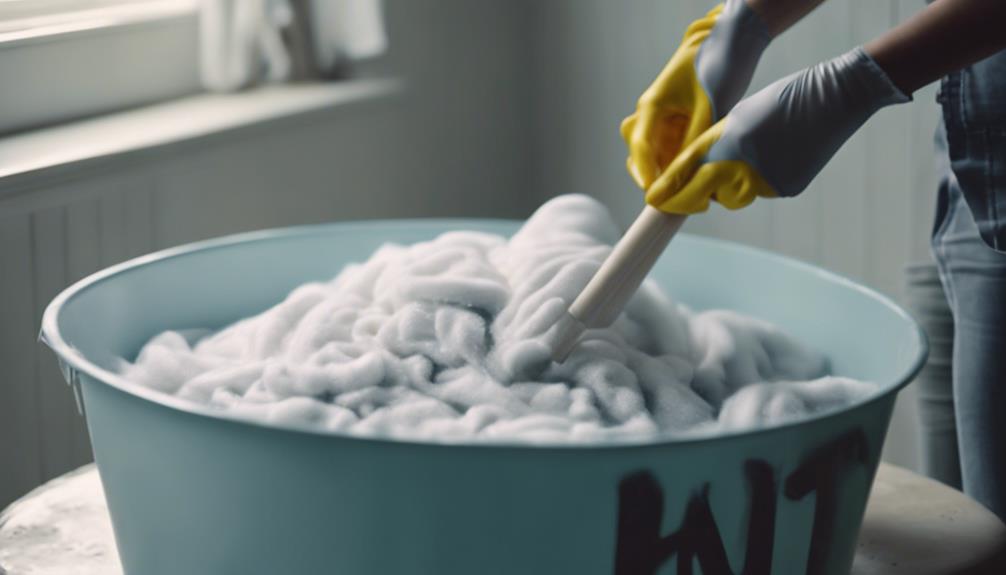
Before dyeing the comforter, thoroughly washing it to remove any dirt or residue is essential. This step guarantees that the dye can penetrate the fabric evenly, resulting in a vibrant and uniform color.
If your comforter weighs more than 8 pounds, consider splitting it into sections to promote even dye distribution. When using Rit Liquid Dye, specifically the Denim Blue Dye, it's recommended to use six bottles for best results.
For the dyeing process, select a washing machine set to hot water and a cycle longer than 30 minutes. This setting helps the dye bond effectively with the fabric fibers.
Following the dye application instructions is important, especially when dealing with different fabric types. For cotton fabrics, use salt dissolved in hot water, while silk or nylon may require vinegar.
Selection of Rit Dye Colors
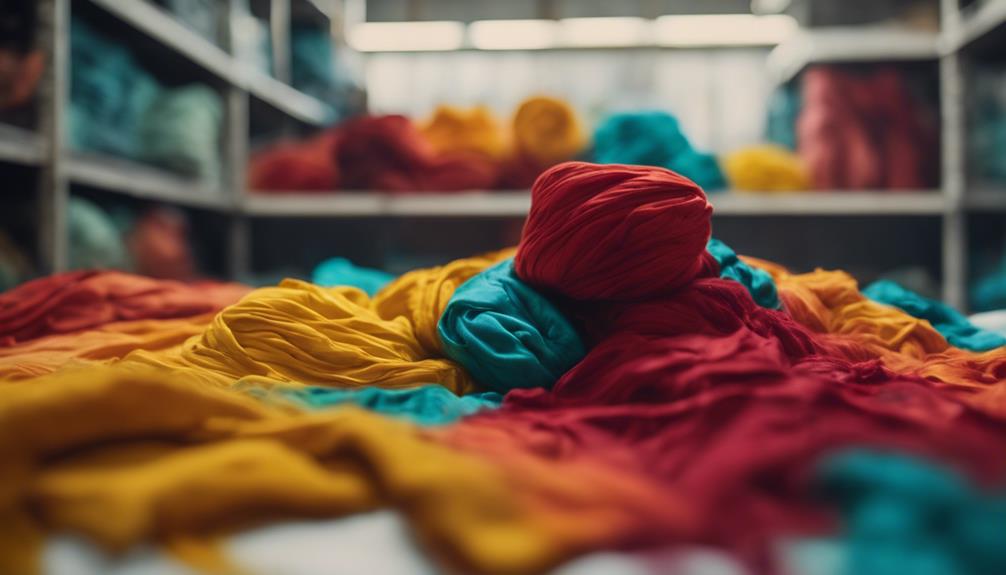
To explore the variety of Rit Dye colors available for dyeing comforters, consider the wide range of vibrant options that can be mixed for custom shades to suit your preferences. Rit Dye offers an array of colors that can bring new life to your comforter. When selecting colors, bear in mind the fabric of the comforter to guarantee the best results. Popular choices include Denim Blue, Olive Green, Scarlet, and more. These colors are not only vibrant but also long-lasting, providing a fresh and personalized look to your bedding. Mixing different Rit Dye colors can help you achieve unique and custom shades that match your style and preferences. Check out the table below for a glimpse of some popular Rit Dye colors:
| Rit Dye Colors |
|---|
| Denim Blue |
| Olive Green |
| Scarlet |
Setting Up the Dyeing Vessel
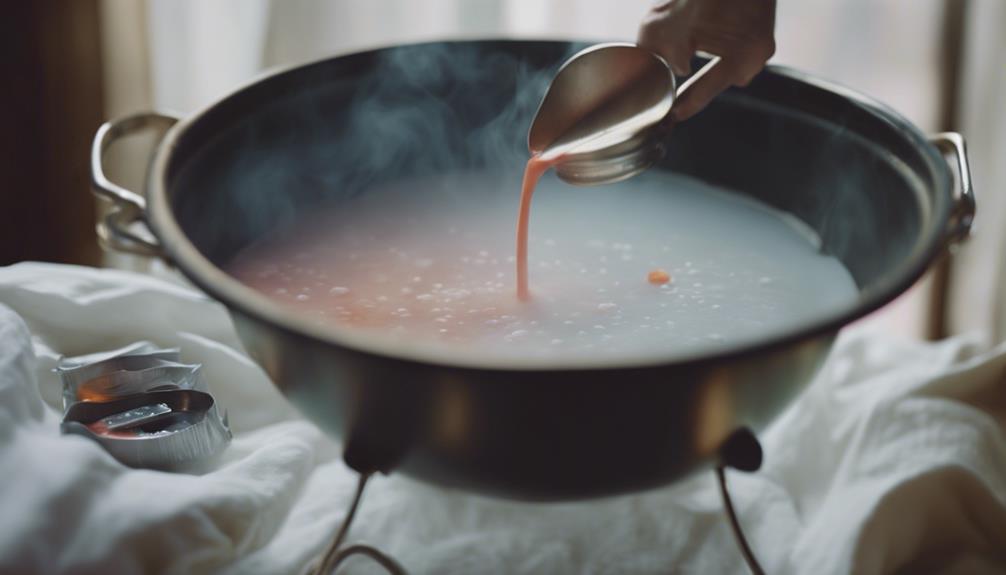
When setting up the dyeing vessel, it's important to choose a container that can comfortably accommodate the comforter.
Make sure the comforter fits in the vessel without being overcrowded to guarantee even dyeing.
Ensuring the comforter is fully submerged in the dye solution is vital for achieving consistent color throughout the fabric.
Choosing Dye Color
We recommend selecting the Denim Blue Dye color for dyeing the comforter with Rit Dye, and then setting up the dyeing vessel, such as a bathtub or washing machine, for the dyeing process. To help you visualize the process, here's a table detailing the essential steps for dyeing your comforter:
| Step | Details | Importance |
|---|---|---|
| Choose Dye Color | Denim Blue Dye is recommended | Achieve desired color |
| Prepare Vessel | Bathtub or washing machine | Proper dye distribution |
| Use Rit Liquid Dye | 6 bottles needed for effective dyeing | Sufficient color saturation |
| Follow Instructions | Carefully adhere to provided guidelines | Desired color outcome |
| Consider Splitting | For comforters over 8 pounds | Even dye distribution |
Following these steps will guarantee a successful dyeing process for your comforter.
Preparing Dye Solution
For best dye penetration and even color distribution, consider utilizing a spacious bathtub or washing machine as the dyeing vessel for your comforter. When dyeing with Rit Liquid Dye in Denim Blue, it's important to prepare the dye solution correctly.
Start by filling the dyeing vessel with enough hot water to cover the comforter completely. Then, add the 6 bottles of Rit Liquid Dye in Denim Blue, following the instructions on the packaging for precise measurements. Stir the dye solution thoroughly to guarantee even distribution.
If your comforter weighs over 8 pounds, consider splitting it to promote better dye penetration. Remember to wash the comforter beforehand to eliminate any dirt or residues that could affect the dyeing process.
Submerging Comforter in Dye
Consider utilizing a spacious tub or washing machine as the vessel for submerging the comforter in the dye. Make sure the comforter can be fully immersed in the dye mixture within the chosen vessel.
Follow the dye-to-water ratio recommended on the Rit dye bottle to achieve the best color results. Keep in mind to agitate or stir the comforter in the dye mixture to distribute the color evenly. This step is essential for uniform coloring.
After dyeing, thoroughly rinse the comforter to remove any excess dye and to lock in the desired color. Proper rinsing helps in setting the dye and prevents color bleeding.
Following these steps will help you successfully dye your comforter with Rit dye.
Mixing Dye With Water
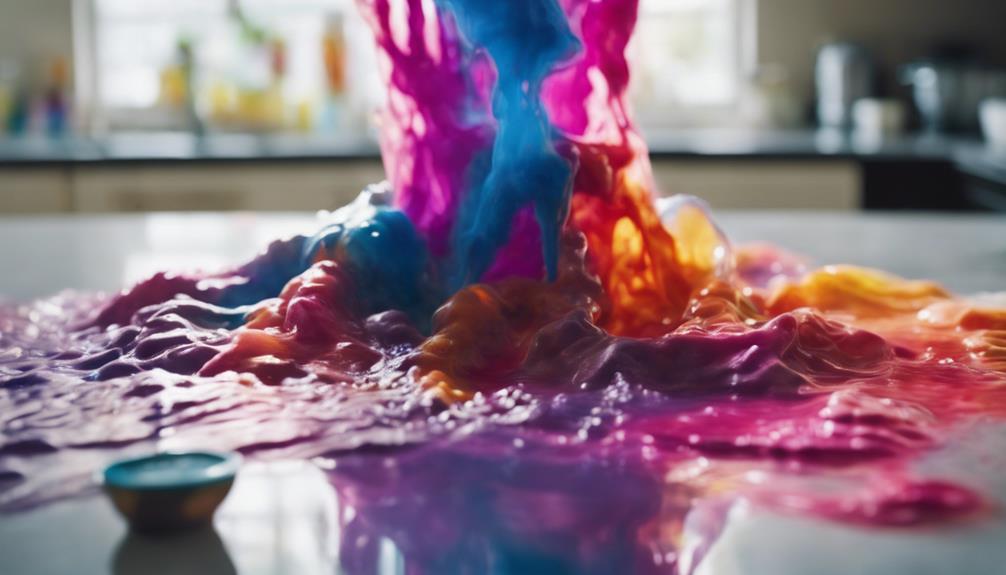
When mixing dye with water, it's crucial to take into account the concentration levels and water temperature.
The correct ratio guarantees the color distributes evenly, preventing patchy coloring.
Consistency in mixing assures a uniform dye saturation on the comforter.
Dye Concentration Levels
To achieve the desired color intensity, we mix Rit Liquid Dye with water in varying concentrations, with the recommended ratio being 1 bottle per pound of fabric.
Adjusting the dye concentration level is important for achieving the right color depth. Higher concentrations lead to darker shades, while lower concentrations result in lighter tones. Finding the balance that suits your fabric weight and desired color outcome is vital.
Ensuring the dye is mixed correctly with water guarantees even color distribution throughout the comforter. Experimenting with different dye concentrations allows for customization and control over the final look, providing flexibility in achieving the perfect color intensity and depth for your comforter.
Water Temperature Considerations
Ensuring proper water temperature when mixing Rit dye is essential for vibrant color absorption by the fabric. Vital water temperature is important as it activates the dye molecules, leading to more vibrant color results.
Cold water may not dissolve the dye effectively, affecting the dyeing outcome. It's important to follow Rit dye instructions for specific water temperature recommendations to achieve the desired color intensity.
Consistent water temperature is key for even dye distribution on the comforter. By using the right water temperature, you can enhance fabric absorption and ensure that the dye spreads evenly, resulting in a beautifully dyed comforter.
Submerging the Comforter in Dye
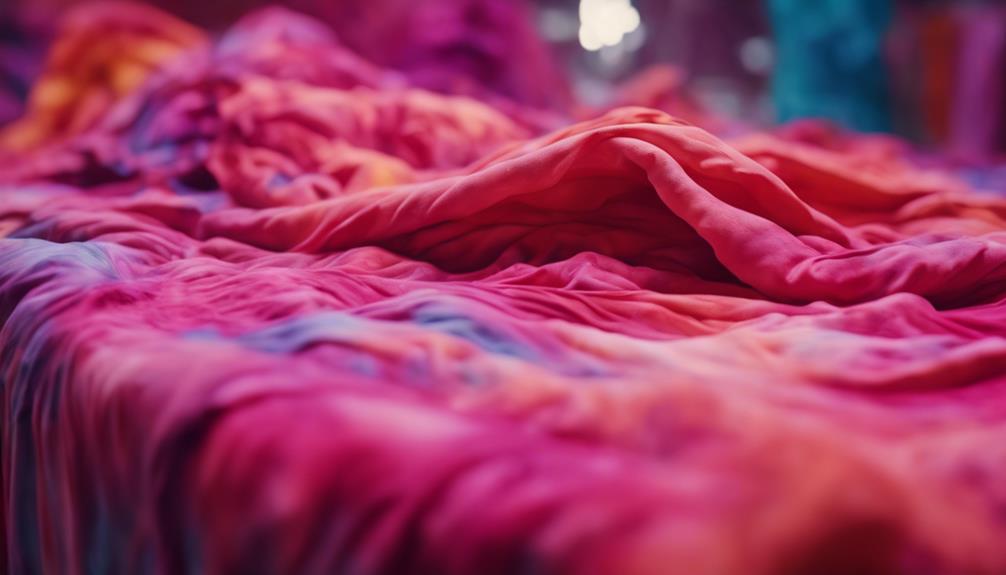
We always make sure to fully submerge the comforter in the dye solution for even color coverage.
Using a large enough container is essential to prevent crowding, allowing the comforter to move freely in the dye.
Gently agitating the comforter in the dye solution helps promote color absorption, ensuring a vibrant outcome.
It's important to let the comforter soak in the dye for the recommended time to achieve the desired hue.
Rinsing the Dyed Comforter
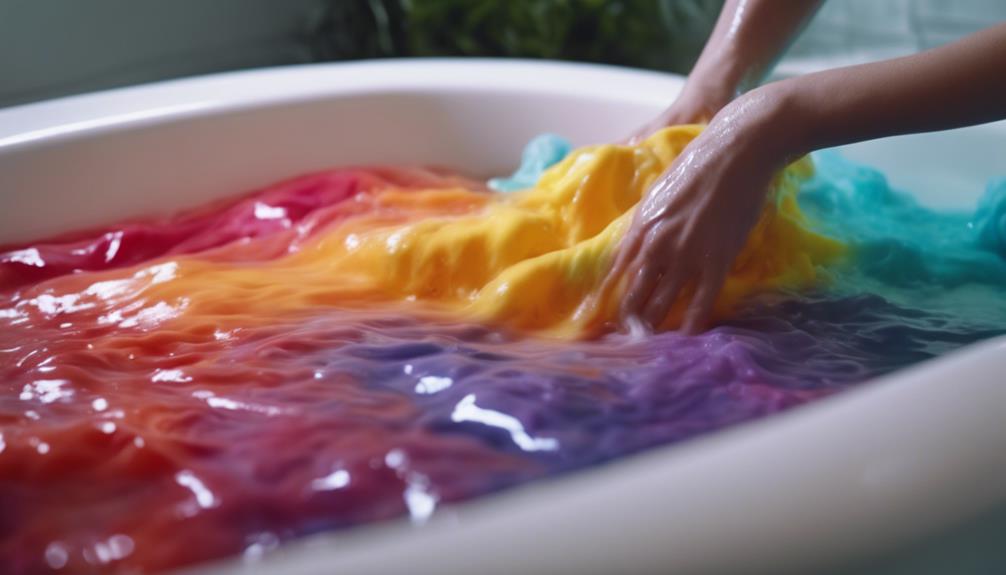
After fully submerging the comforter in the dye solution, the next step is to rinse it in cold water until the water runs clear to eliminate any excess dye. This process helps guarantee the dye from bleeding onto other items during future washes. Gently squeezing the comforter while rinsing aids in removing the dye and guarantees a thorough rinse. It is crucial to repeat the rinsing process as many times as needed until no more dye is coming out, especially with darker or vibrant colors.
To help you understand the rinsing process better, here is a table detailing the steps involved:
| Step | Description | Importance |
|---|---|---|
| Rinse in Cold Water | Eliminates excess dye from the comforter | Prevents color bleeding |
| Gently Squeeze | Helps in dye removal and thorough rinsing | Ensures even coloring |
| Repeat if Necessary | Ensure all residual dye is removed | Prevents staining |
| Avoid Wringing | Prevents damage to fabric and color distribution | Preserves comforter quality |
Removing Excess Dye
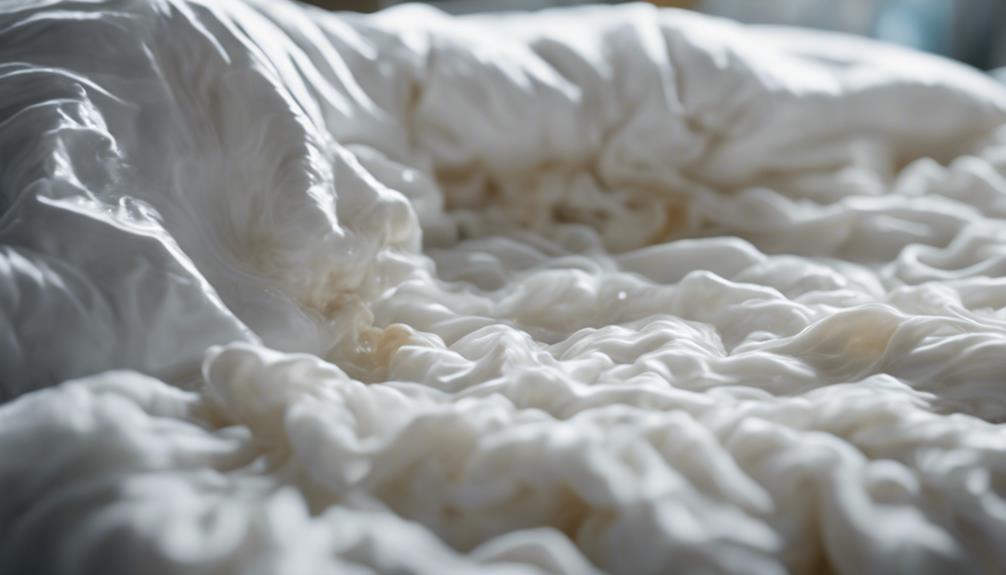
To effectively eliminate any excess dye from the comforter after dyeing with Rit dye, thoroughly rinse it in cold water. This step is important in making sure that the comforter doesn't bleed excess dye onto other fabrics during future washes. By rinsing the comforter in cold water, you help remove any loose dye particles that didn't adhere to the fabric during the dyeing process. It's recommended to use a gentle detergent when washing the comforter after dyeing to further assist in removing any remaining excess dye.
During the rinsing process, keep an eye on the water. If the water runs clear, it indicates that the excess dye has been successfully removed. It's important to avoid using hot water when rinsing the comforter, as this could set any remaining excess dye into the fabric. If the water is still showing signs of dye, repeat the rinsing process until the water runs clear to ensure all excess dye is eliminated. By following these steps, you can effectively remove excess dye from the comforter post-dyeing, leaving it ready for use without the risk of staining other items.
Ensuring Even Color Distribution
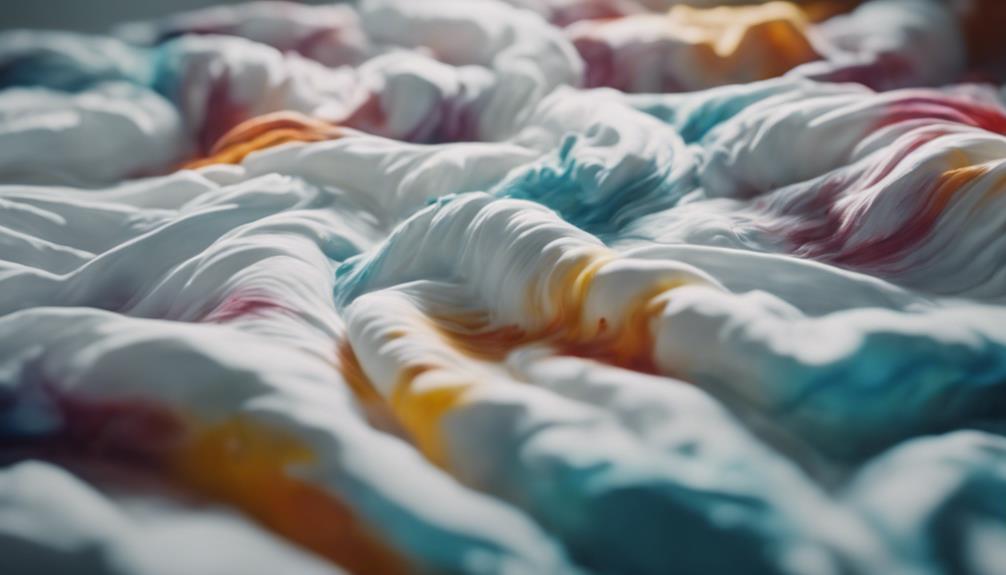
For reliable color distribution when dyeing a comforter with Rit dye, make sure to thoroughly mix the dye solution before application. This step is vital in guaranteeing that the dye is evenly dispersed, preventing splotches or uneven coloring on the fabric.
Gently agitating the comforter in the dye bath is also essential to promote consistent color absorption throughout the fabric. By moving the comforter around periodically during the dyeing process, you can prevent color pooling and achieve a more uniform saturation.
If you're dealing with a large comforter, consider splitting it into sections for better dye penetration and to ensure a more even coloring. Following Rit dye's specific instructions for comforter dyeing is key to achieving the best results and avoiding potential color inconsistencies.
Frequently Asked Questions
Can I Use Rit Dye on a Comforter?
Yes, we can use Rit dye on a comforter. It's important to choose Rit Liquid Dye for best results.
Make sure to wash the comforter thoroughly beforehand. Following the dyeing instructions precisely prevents color transfer and guarantees even dyeing.
By utilizing Rit dye on your comforter, you can give it a fresh appearance and save money compared to purchasing a new one.
Enjoy transforming your comforter with Rit dye!
What Fabrics Does Rit Dye Not Work On?
It's crucial to check your fabric's composition and condition before attempting to dye it with Rit dye. Certain fabrics are unsuitable for Rit dye. Fabrics labeled 'dry clean only' are a no-go. Also, fabrics with special coatings like water repellent or stain-resistant may not dye evenly. Avoid 100% polyester, acrylic, or acetate fabrics.
Fabrics heavily soiled or treated with bleach may not dye well either. Remember to assess your fabric's composition and condition before trying to dye it with Rit dye.
How Do You Dye a Large Blanket With Rit Dye?
To dye a large blanket with Rit Dye, we recommend using 6 bottles of Rit Liquid Dye in Denim Blue for best results. If the blanket weighs over 8 pounds, divide it before dyeing to guarantee even coloring.
Follow the dyeing instructions carefully, including a thorough pre-dye wash. Set your washing machine to hot water with a cycle longer than 30 minutes.
For different materials, consider using salt water for cotton or vinegar for silk/nylon to set the dye effectively.
Will Rit Dye Stain My Washing Machine?
We can assure you that using Rit Dye shouldn't permanently stain your washing machine. While some users have reported temporary staining on plastic parts of front-loading machines, proper cleaning with bleach after the dyeing process can prevent this issue.
Stovetop methods are recommended for dyeing synthetic fabrics to avoid any potential machine staining. By following the proper cleaning procedures, you can successfully dye your comforter without worrying about staining your washing machine.
Can I Use Rit Dye to Change the Color of My Throw Pillows?
Yes, you can use Rit Dye to change the color of your throw pillows. Rit Dye is designed to work on a variety of fabric materials, making it a great option for refreshing your home decor. This is why they’re called throw pillows – you can easily change up their look with a simple dyeing process.
Conclusion
To sum up, dyeing a comforter with Rit dye is a straightforward process that can transform your bedding into a unique work of art. Just like a painter adds color to a canvas, you can personalize your comforter with vibrant hues.
Follow the steps outlined in this guide to achieve even color distribution and create a one-of-a-kind masterpiece that will brighten up your bedroom. Let your creativity flow as you dye your comforter with Rit dye.
